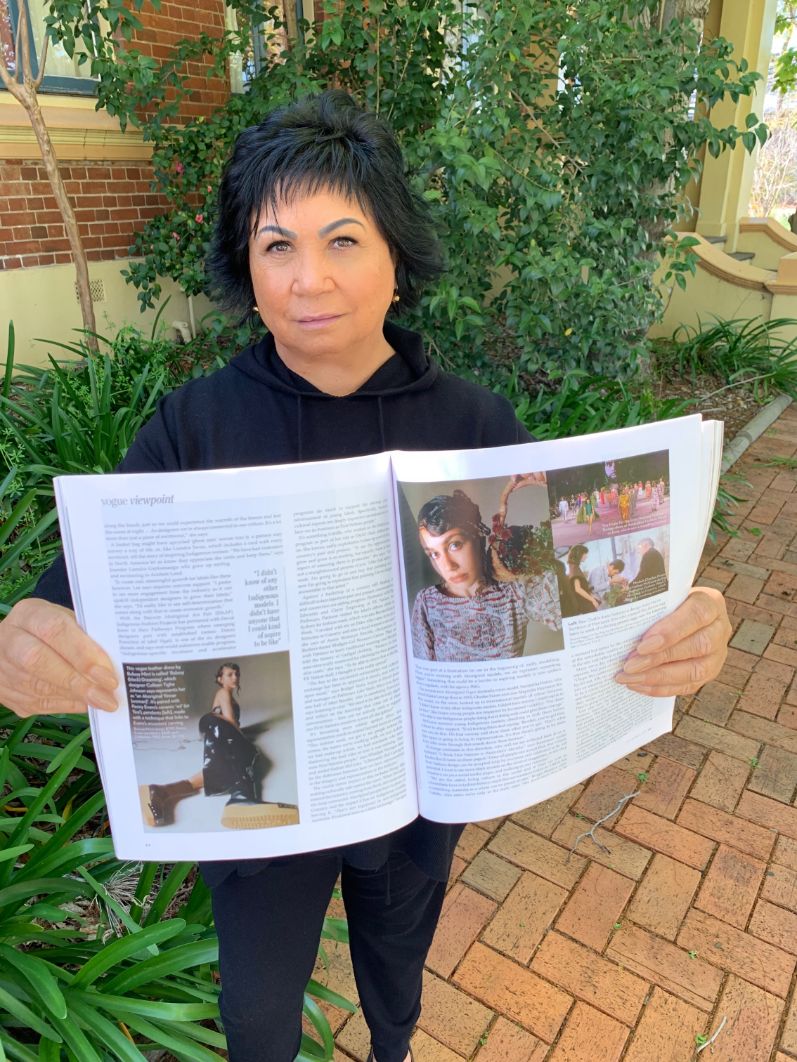Colleen Tighe Johnson’s phone has been running hot as news spreads of “that black patent vegan leather dress” in the September issue of Australian Vogue.
The striking design – featured in a spread about the rising prominence of Indigenous designers – has catapulted the modest UNE SMART Region Incubator founder and accomplished Tamworth fashionista into the limelight. But while she’s “over the moon” with the industry recognition, Colleen is quick to stress that it has been a long time coming.
“It’s the pinnacle of design to be showcased in Australian Vogue; it’s a dream come true,” she says. “But things don’t just fall in your lap overnight. I’ve been chipping away for more than 10 years with Buluuy Mirrii (Colleen’s fashion label, meaning "Black Star" in the Gomeroi language). It’s a platform that I have created through hard work. And it’s much bigger than me; it’s about acknowledgement for my cultural heritage.”

The picture of Colleen's dress as it appears in Australian Vogue.
Colleen’s designs, featuring fabrics printed with Aboriginal stories and motifs created by Gomeroi artists, have graced runways in Melbourne, New Zealand, the United States and Canada. They have also featured in fashion week shows in New York and Paris, and at the Cannes Film Festival, but true inclusion in Australian fashion circles is another matter.
“The Vogue spread marks a new era of breaking down those barriers, of fully integrating First Nations designers into the mainstream," Colleen says. "I hope it means that the fashion industry is now taking Aboriginal and Torres Strait Islander designers seriously. I have been fighting for that for a while, not only for me, but for my people.
“In Canada and the US, First Nations designers are part of runway shows year-round, not just one show during Fashion Week or NAIDOC Week. For me, it’s not about the money. It’s always been about sharing my stories and creating career pathways for Indigenous people, and about opening doors.”
It’s always been about sharing my stories and creating career pathways for Indigenous people, and about opening doors.
Worn by Indigenous model Keisha Bovill, Colleen’s dress Buluuy (black) Dreaming references her long-term passion for patent leather and Italian fashion – a passion inspired by her stylish grandmother.
A Moree seamstress, ballroom dancing instructor and head nurse, Alma Tighe would “cut her own patterns and put her dresses together” before Colleen’s eyes on an old Singer sewing machine. She was widely regarded as charming and cultured, and if an Aboriginal family lacked the clothes for a special occasion, she would make them suits and frocks.
And what would the beloved matriarch make of the Vogue feature? “I think my grandmother would be smiling,” Colleen says. “I just hope it inspires other Indigenous designers to follow their dreams and reach for their goals. Because to be recognised in such a high-profile magazine signals to me that the doors are starting to open.”


